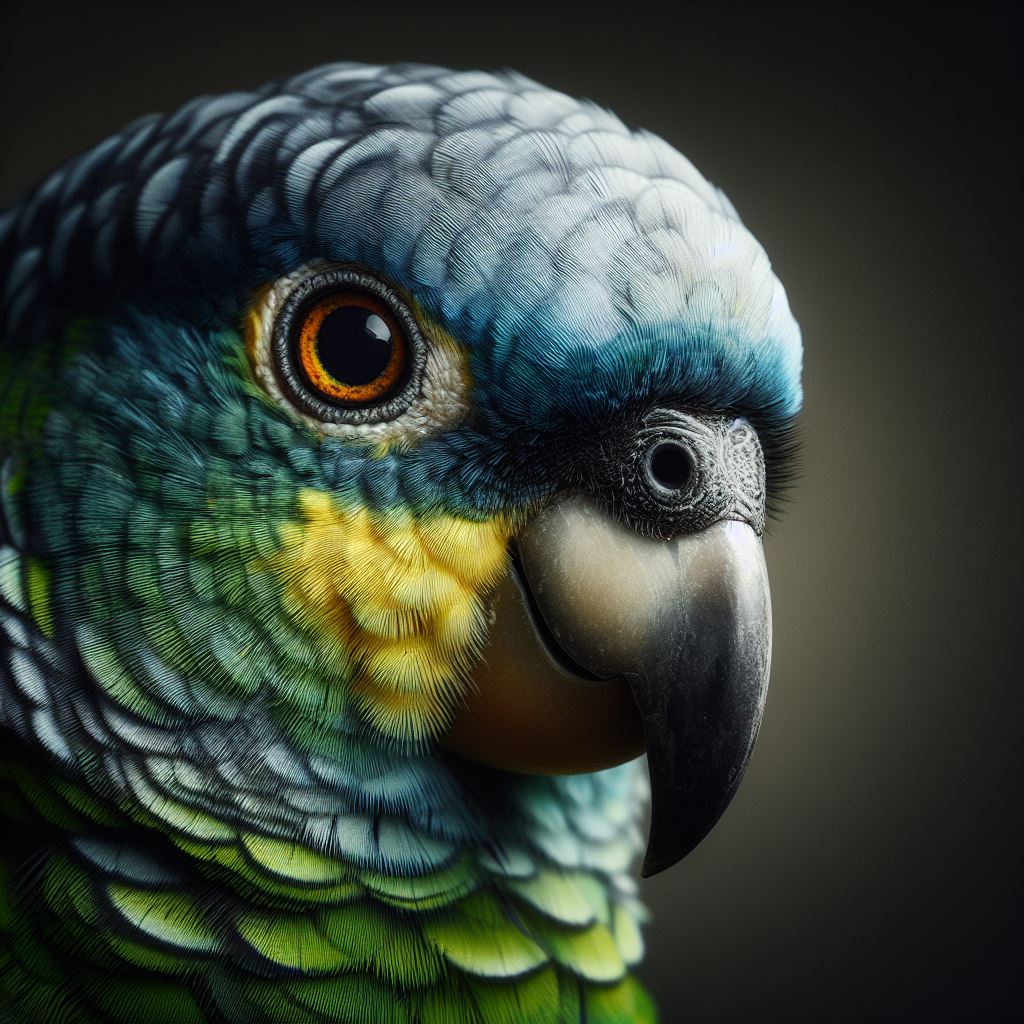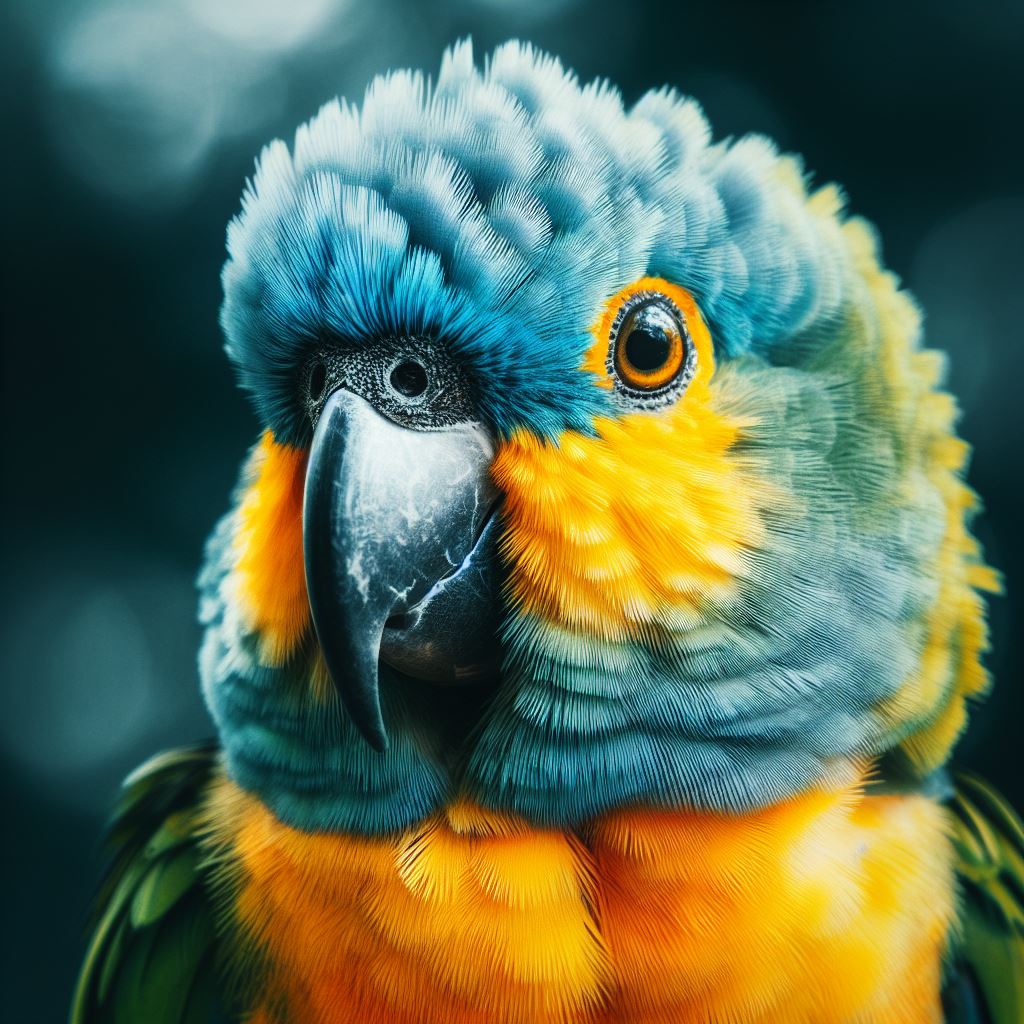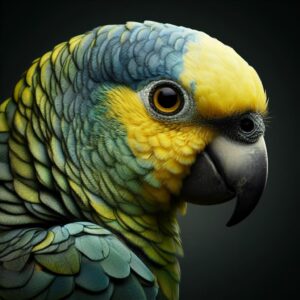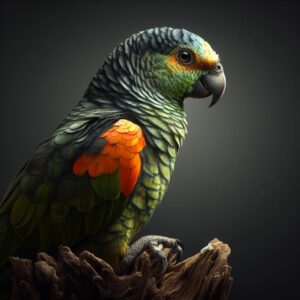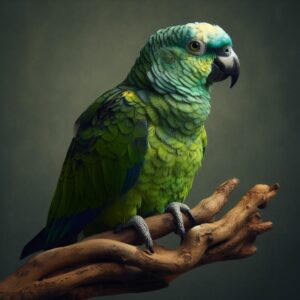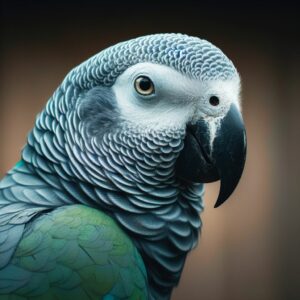The Blue Fronted Amazon, scientifically known as Amazona aestiva, hails from the heart of South America, gracing the skies of countries like Brazil, Paraguay, Bolivia, and northern Argentina. This magnificent parrot species, with its captivating azure markings and lively demeanor, has been a symbol of the region’s rich biodiversity for centuries.
The discovery of the Blue Fronted Amazon traces back to the early days of European exploration in the Americas. While specific records regarding its initial encounter are scarce, the species gained recognition among naturalists and explorers during the late 18th and early 19th centuries. Its vivid colors and striking appearance quickly captivated the imagination of ornithologists and enthusiasts alike, marking the beginning of a long-standing fascination with this charismatic parrot species. Today, the Blue Fronted Amazon continues to enchant bird lovers worldwide with its beauty and charm.
Distinctive Traits of Blue-Fronted Amazons
Blue Fronted Amazons, renowned for their captivating presence, possess a set of distinctive traits that make them truly remarkable.
- Size: These majestic parrots are of moderate size, typically ranging between 14 to 15 inches (35 to 38 centimeters) in length, from beak to tail tip. Their size allows them to gracefully navigate their natural habitats while also making them suitable companions for bird enthusiasts.
- Weight: Adult Blue Fronted Amazons generally weigh between 15 to 20 ounces (425 to 570 grams). Their weight can vary slightly based on factors such as diet, age, and overall health. This moderate weight contributes to their agile flight and sturdy build.
- Colors: The defining characteristic of Blue Fronted Amazons lies in their vibrant plumage. While the dominant hue is a captivating green that blends into their natural surroundings, their name originates from the striking blue patch adorning their foreheads. This vivid blue frontal band contrasts dramatically with the surrounding green feathers, creating a visually stunning effect. Additionally, they often feature accents of yellow and red on their wings and sometimes on their crown, further enhancing their visual appeal.
Sexual Dimorphism
Blue-fronted Amazons exhibit minimal sexual dimorphism, meaning that physical differences between males and females are not easily discernible to the naked eye. Typically, a DNA test or a veterinary examination is required to accurately determine their gender. This characteristic trait adds an air of mystery to their identity, intriguing enthusiasts and researchers alike.
Interaction with Humans
One of the most endearing traits of Blue Fronted Amazons is their sociable and affectionate nature. They are known for forming strong bonds with their human caregivers. These parrots thrive on interaction and mental stimulation, eagerly engaging in playful activities and mimicking human speech with surprising clarity. Their friendly disposition makes them popular pets, as they readily become part of the family, providing companionship and joy to those who welcome them into their homes. With proper socialization and positive reinforcement, Blue Fronted Amazons can develop deep and meaningful relationships with their human companions, enriching the lives of both parties involved.
Looking After a Blue-fronted Amazon
Safety and Habitat:
Ensuring the well-being of your Blue Fronted Amazon begins with providing a secure and enriching environment within their habitat.
- Bird Cage Size: Select a spacious cage that allows ample room for your parrot to move, stretch its wings, and exercise. A cage with dimensions of at least 36 inches in width, 24 inches in depth, and 48 inches in height is recommended.
- Bird Cage Material: Opt for a sturdy and non-toxic material for the cage, such as stainless steel or wrought iron. These materials are durable, easy to clean, and free from harmful substances that could endanger your pet.
- Bird Cage Decorations: Enhance the cage with natural perches of varying sizes to promote foot health. Add non-toxic, chewable toys, swings, and climbing structures to keep your parrot mentally and physically engaged.
- Bird Cage Location: Place the cage in a well-lit, draft-free area of your home. Avoid direct sunlight and extreme temperature fluctuations. A sense of security can be provided by placing the cage against a wall, allowing your parrot to observe the surroundings while feeling safe.
- Freedom Outside the Cage: While a secure cage is essential, it is equally important to allow your Blue Fronted Amazon supervised out-of-cage time daily. This freedom aids in physical exercise and mental stimulation, promoting a healthier, happier pet.
Healthy Diet:
A balanced and nutritious diet is vital for the overall health of your Blue-Fronted Amazon.
- Foot Type and Feeding Time: Provide a diverse diet that includes fresh fruits such as apples, bananas, and oranges, and vegetables like carrots, broccoli, and leafy greens. High-quality pellets designed for Amazon parrots should constitute a significant portion of their diet. Offer food in the morning and remove any uneaten portions in the evening to maintain freshness.
Mental Stimulation:
Keeping your Blue-Fronted Amazon mentally stimulated is crucial for its well-being and happiness.
- Games and Tricks: Engage their brilliant minds with interactive toys, puzzles, and foraging games. Hide treats inside puzzle toys to encourage problem-solving skills. Additionally, teaching them simple tricks like waving or retrieving objects not only stimulates their intellect but also strengthens their bond through positive interactions. Rotate toys regularly to prevent boredom, ensuring a consistently stimulating environment.
By attending to their safety, providing a nutritious diet, and engaging them mentally, you create an environment where your Blue Fronted Amazon can thrive, showcasing its intelligence, curiosity, and playful nature to the fullest.
Housing and Environment for Blue Fronted Amazons
Creating a suitable housing and environment for Blue-fronted Amazons is crucial for their well-being. Providing a spacious, stimulating, and safe living space is essential to ensure these intelligent and social parrots thrive. Here are some guidelines for housing and environmental considerations:
Cage:
- Size: Select the largest cage possible to allow ample space for movement. A minimum size for a single Blue-fronted Amazon should be at least 3 feet by 3 feet by 4 feet.
- Bar Spacing: Ensure the bar spacing is appropriate (around 3/4 to 1 inch) to prevent the parrot from getting stuck or injured.
- Material: Opt for a sturdy, non-toxic material such as stainless steel or powder-coated metal.
- Accessibility: Provide multiple perches of varying thickness and texture. Include natural branches to encourage foot exercise.
Cage Placement:
- Avoid Drafts: Place the cage away from drafts, windows, air conditioning vents, and direct sunlight to maintain a stable temperature.
- Social Interaction: Position the cage in an area where the parrot can interact with family members without being isolated.
Environmental Enrichment:
- Toys: Provide a variety of toys such as puzzles, chew toys, and foraging toys to keep the parrot mentally stimulated and prevent boredom.
- Rotate Toys: Rotate toys regularly to maintain the parrot’s interest and prevent them from getting bored.
- Cage Layout: Arrange perches, toys, and feeding dishes to encourage movement and exploration within the cage.
Diet and Feeding:
- Balanced Diet: Offer a balanced diet consisting of high-quality pellets, fresh fruits, vegetables, and occasional nuts or seeds. Avoid foods high in salt, sugar, and fat.
- Fresh Water: Ensure a clean, fresh water supply is available at all times.
Social Interaction:
- Social Time: Blue-fronted Amazons are social birds and require regular interaction with their human family members. Spend quality time interacting, talking, and playing with the parrot daily.
Mental Stimulation:
- Training: Engage in positive reinforcement training sessions to keep the parrot mentally active and establish a strong bond.
- Out-of-Cage Time: Provide supervised out-of-cage time in a safe, bird-proofed area to allow the parrot to explore and exercise.
Health and Hygiene:
- Cleanliness: Regularly clean the cage, perches, toys, and feeding dishes to maintain a hygienic environment. Remove any uneaten food promptly.
- Veterinary Care: Schedule regular check-ups with an avian veterinarian to ensure the parrot’s health and address any concerns promptly.
By creating an enriching and safe environment, providing a balanced diet, and offering social interaction and mental stimulation, you can provide a fulfilling and happy life for your Blue-fronted Amazon parrot. Remember that each bird is unique, so observe their behavior and preferences to tailor their environment to their specific needs.
Frequent Health Concerns in Blue-Fronted Amazons
Blue-fronted Amazons, scientifically known as Amazona aestiva, are popular and intelligent parrots that are native to South America. Like all parrots, they are prone to certain health concerns that owners should be aware of. Here are some frequent health concerns in Blue-fronted Amazons:
Respiratory Infections:
- Symptoms: Sneezing, coughing, nasal discharge, and labored breathing.
- Causes: Bacterial, viral, or fungal infections can lead to respiratory problems.
- Prevention: Maintain a clean environment and ensure proper ventilation. Avoid exposure to drafts and sudden temperature changes.
Gastrointestinal Disorders:
- Symptoms: Diarrhea, changes in the color or consistency of droppings, vomiting, loss of appetite.
- Causes: Poor diet, stress, or bacterial and parasitic infections.
- Prevention: Provide a balanced diet, keep the living area clean, and avoid sudden dietary changes.
Feather Plucking:
- Symptoms: Self-mutilation, feather loss, and bare skin patches.
- Causes: Behavioral issues, stress, boredom, or underlying health problems.
- Prevention: Offer mental stimulation, social interaction, and a stimulating environment. Regular vet check-ups can rule out medical causes.
Psittacosis (Chlamydiosis):
- Symptoms: Respiratory issues, weight loss, lethargy, watery droppings.
- Causes: Bacterial infection caused by Chlamydia psittaci.
- Prevention: Quarantine new birds, maintain good hygiene, and ensure regular vet check-ups.
Nutritional Deficiencies:
- Symptoms: Poor feather quality, lethargy, loss of appetite, delayed growth in young birds.
- Causes: Lack of proper nutrition, especially Vitamin A, calcium, and other essential nutrients.
- Prevention: Provide a balanced and varied diet that includes pellets, fresh fruits, vegetables, and occasional nuts or seeds.
Heavy Metal Poisoning:
- Symptoms: Digestive issues, neurological symptoms, loss of balance, seizures.
- Causes: Ingestion of items containing heavy metals like lead or zinc, often from toys or cage parts.
- Prevention: Use bird-safe, non-toxic materials in the cage. Regularly inspect toys and cage accessories for signs of wear.
Obesity:
- Symptoms: Difficulty in moving, labored breathing, overgrown beak and nails.
- Causes: Lack of exercise, poor diet, overfeeding, and limited space for physical activity.
- Prevention: Provide a balanced diet and ample opportunities for physical exercise and mental stimulation.
Pacheco’s Disease:
- Symptoms: Sudden death, lethargy, loss of appetite, green urates (urine).
- Causes: Viral infection caused by the herpesvirus, often spread through contact with infected birds or contaminated surfaces.
- Prevention: Quarantine new birds, maintain good hygiene, and consult a vet if any symptoms appear.
If you suspect any health issues in your Blue-fronted Amazon, it’s essential to consult an avian veterinarian promptly. Regular vet check-ups, a balanced diet, and a stimulating environment are key to keeping your parrot healthy and happy.
Closing Thoughts: The Pleasures of Having a Blue-Fronted Amazon
In the tapestry of life, a Blue Fronted Amazon weaves threads of love, laughter, and enduring happiness. Reflect on the profound joys garnered from their presence, a symphony of colors and melodies, reminding us that in their wings, we find not just a pet but a cherished confidant, an embodiment of nature’s magnificence in our very midst.

